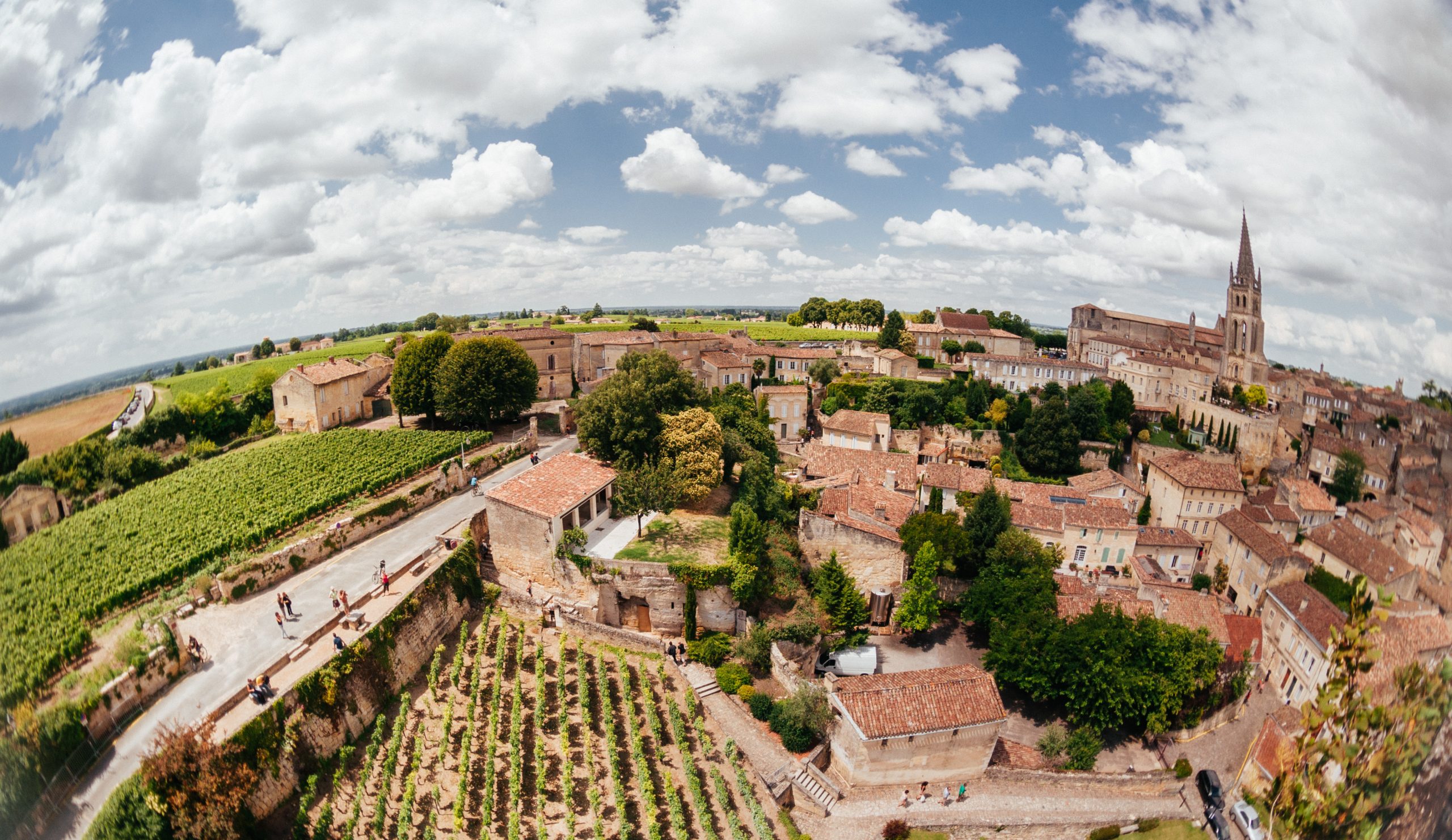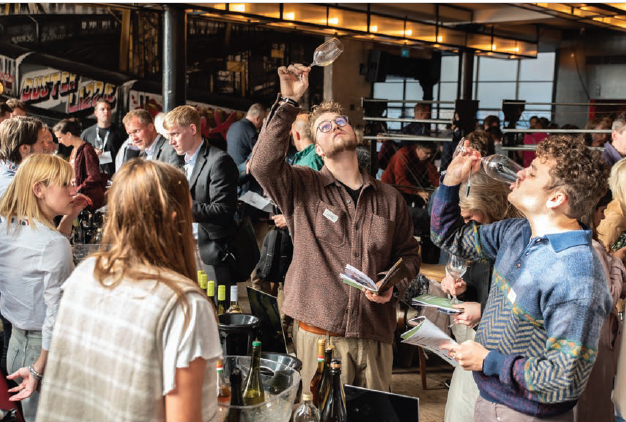US seasonal outlook mixed as industry holds breath on tariffs
Will he or won’t he? As a mercurial leader ascends in the U.S., wine pros rally to stave off wine tax and capitalise on the holiday season.

Popping a bottle of fizz and/or a classic feast-ready red over the holidays is a rite of passage for many Americans, even those who refrain from regular imbibing.
This year, on the heels of a presidential election that may transform the wine market and the economy more broadly, many wonder how the holiday celebrations will fare.
Already, all signs point to some sort of broad tariff. On November 25, president-elect Donald Trump pledged hikes on all goods coming from Mexico, Canada and China.
“On January 20, as one of my many first Executive Orders, I will sign all necessary documents to charge Mexico and Canada a 25% Tariff on ALL products coming in the United States, and its ridiculous Open Borders,” he posted on his Truth Social social media platform.
Will Americans stock up on French bubbles and Spanish reds to pair with feasts, and in expectation of a debilitating wine tariff?
Some wines for celebrations and feasts are thriving
During the holiday feasting season, some classic red wines are still a go-to, even as tastes change and wallets tighten. Wine consumption keeps falling – down -2.6% last year overall, per the OIV – and WSWA’s SipSource is reporting a -6% dip in sales to U.S. retailers.
And yet, some habits are hard to shake. As soon as the leaves turn, on-premise drinks directors begin noticing a subtle shift in palates.
“Across our restaurants right now, there is a renewed enthusiasm for the world’s esteemed classic wine regions,” says Eduardo Porto Carreiro, vice president of beverage for the progressive, chef-driven Rocket Farm Restaurants group. “Bordeaux is flying off our shelves. Some of our guests opt for classified growths, but wines from less renowned appellations within the region are also performing well at dinner.”

Importers are also seeing pockets of huge gains amid widespread loss. While Rioja sales are down year-over-year through November by -4.3% in value and -10% in volume according to Information Resources Inc., Gonzalez Byass USA notes that their Beronia wines in particular are performing well.
“Beronia is up 14.9% in value and 4% in volume,” says Gonzalez Byass CEO Andrew Sinclair.
The Beronia Gran Reserva is up 60.8% in value and 64% in volume, Sinclair notes, adding that he attributes the success to the “exceptional value for money” that it delivers. The specialty SKUs are performing really well, he adds, a trend that repeats itself with the Champagne and sparkling wine market.
Celebratory bubbles, even more than feasting reds, are practically synonymous with the winter holidays. About 20% of all consumption of sparkling wine occurs during December, historically spiking around 2.5 and 3.2 times the baseline volume for Champagne and Prosecco, respectively, according to IWSR data.
But that pattern is changing, and may – with a few key caveats – continue to change this year. Last year, consumers only increased their consumption of Champagne in December by 2.5 to 2.4 times the baseline, and Prosecco deflated from 3.2 to 3 times the baseline.
So far this year, Champagne sales overall have dropped 8.2%, but alternative European sparklers are surging.
While wine and must production overall is projected to be down -3% year over year this year (and -10% when compared to the five year average), according to a report from Copa-Cogeca, the EU’s organization representing farmers and food coops, Italy’s production is expected to go up 7%, and Spain’s is on track to grow by 18%. These numbers dovetail with the success of sparkling wine for both countries.
Sparkling Italian wine registered a 7% increase in value, according to Italian customs data, becoming the second most exported category of wine for the country. The U.S. is the top market in terms of value, increasing its share by 4.7% to €938.9 million.
Cava sales increased more modestly overall, but registered a 1.09% bump last year, with similar projections for this year, according to D.O. Cava. But sales in the U.S. have been less brisk, and actually declined considerably by about -13.48%.
Exceptional releases are the exception in Champagne and Cava
While overall numbers are negative for both Champagne and Cava, the market in the U.S. appears very thirsty for special releases.
“We have seen a shift in consumers embracing sparkling wines as everyday drinks, and putting less emphasis on a celebration, and more a moment of affordable pleasure,” says Enore Ceola, CEO of Freixenet Mionetto USA. “Prosecco is leading the shift with consumers.”
Their flagship Prosecco, Mionetto, has seen sales increase by 10% so far this year, he says. And while Cava overall is a mixed bag, specialty SKUs are doing very well, up 15% year-over-year so far, Ceola notes.
On-premise sales in restaurants, perhaps due to the continued spritz trend at restaurants, has been stronger than off-premise in retail.
“Quality has increased in recent years, and consumer awareness of the category has grown,” he says, “I don’t see any particular style being ‘on fire’ but Brut is leading the path with interesting expressions that are gaining momentum, like Reserva Brut and Vintage Cava. Within our portfolio, Segura Viudas Cava is performing well.”
Champagne houses with rare and vintage releases in their U.S. portfolio are also bucking the general downward trend.
Partner Content
“For us in the U.S. we have had a big gain year-to-date,” says Frédéric Mairesse, managing director at Champagne Barons de Rothschild. “Our NV is doing well, but our vintage Champagnes and Rare Collection are performing particularly well. Overall, we are up 20% year to date.”

The U.S. is becoming such a strong market for the brand that Mairesse says they hope to continue their strong pattern of growth by hiring two on-the-ground educators in New York City and Miami.
“We go personally as a family three or four times a year, and we do events and dinners the whole time,” he says. “But having people on the ground conducting masterclasses and reaching out to trade every day is really helpful.”
Eschewing ads completely, Mairesse says he relies on these word-of-mouth sales to support continued growth.
Are they nervous about the next administration, and the looming specter of tariffs?
“So far, we have actually seen and heard about a big increase in interest in Champagne around and following the election,” he says.
Indeed, orders for Champagne delivery via booze and food service Gopuff went up 93% on election night, when compared to an average Tuesday. Still, Mairesse is nervous enough about potential tariffs that Rothschild plans to send one-two shipments ahead of January.
Wine tariffs: will he or won’t he?
During President-elect Trump’s presidential campaign, he floated plans to tariff all imports into the county, first at 10%, then at 20%. Chinese imports would get a 60% tariff, and Mexican imports would get hit with a 25%-100% tax. It is to be seen how this will all play out in reality.
During Trump’s first term, he hit a variety of imports with tariffs, including a 25% tax on certain categories of still wine from France, Spain and Germany, which cost American importers alone around $239 billion over 18 months.

The U.S. Wine Trade Alliance (USWTA), an anti-tariff lobby group organized a vociferous response during Trump’s last administration, and they have also been hard at work behind the scenes in D.C. to persuade legislators that levies on imported wines in particular would end up costing U.S. consumers and domestic wine producers.
“Tariffs are going to happen,” says USWTA president Ben Aneff. “But tariffs on wine are not a certainty.”
Aneff says that he and the USWTA have been hard at work giving Congress and members of Trump’s team a crash-course on the three-tier system.
“When tariffs were initially issued, it was framed as only harming the producers and countries that were hit with the tax,” he says. “But that’s not how it works with wine. There is no Dom Perignon store like there is a Chanel store.”
While many people can and will make the argument that certain tariffs are in fact retaliatory, and only affect the brands and industries that they target, the same argument cannot be made with wine.
“On every $1 spent on wine in the U.S. from abroad, we keep $4.52 in the U.S., because of the three-tier system,” he says. “A French producer sells wine to the importer, who sells it to the distributor, who sells it to restaurants and retailers.”
$1 of French wine, in other words, translates into $4.52 that goes into the pockets of American workers.
“We are having great success in D.C. talking and explaining how dependent small businesses, including more than 47,500 independent wine stores, more than 4,000 importers and distributors, and hundreds of thousands of restaurants depend on the sale of imported wine,” Aneff says. “I can’t overstate how confused D.C. was initially by the three-tier system.”
In addition to breaking down the economic realities and impacts of tariffs on American workers, Aneff says they have also explained the logistical challenges for domestic producers.
“It may sound great for California wineries if French wine gets levied, but it’s not that simple,” he says “These wineries need distributors by law in many states to ship wine, and have it poured by the glass. If these distributors are harmed financially by these tariffs, it will trickle down and affect their ability to get on restaurant lists.”
And they need new markets, he adds. Just as domestic wineries are ramping up their exports—last year, the U.S. sent $1.2 billion worth of wine abroad, according to the OIV State of Wine & Vine Sector report—a sudden tax on imports into the U.S. would likely be met with a retaliatory tariff, says Arneff.
Last year, the U.S. imported more wine by value than any other country, just about $6.52 billion, according to the International Organization of Vine and Wine.
There’s a lot at stake. Trump may not drink alcohol, but the world of politics is often oiled by flattery.
Perhaps wine regions across the world should follow in the footsteps of world and business leaders in issuing (regardless of their personal views) congratulations and compliments post election.
Related news
Castel Group leadership coup escalates




